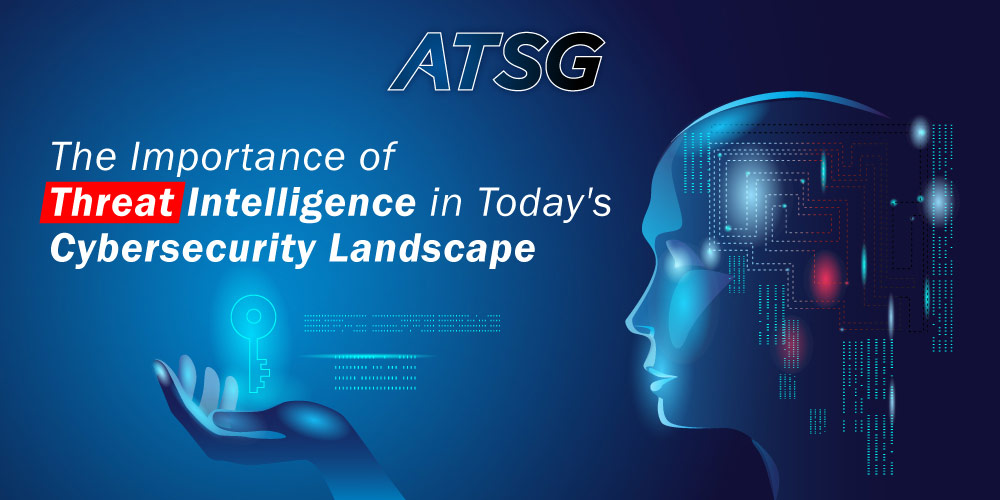Despite adopting numerous Cyber Security Measures, it is unfortunate that many businesses are still “visible” on the radar of cybercriminals. What’s even worse, these bad actors have acquired a lot of sophisticated technologies and malicious tools to cause serious damage to businesses around the world. In such a scenario, Threat Intelligence becomes an absolute business necessity in order for businesses to remain strong against rising cyber threats.
In addition, the COVID-19 pandemic further emphasized the need for robust cybersecurity, as it forced businesses to make significant changes in their legacy operations. Many companies initiated a shift towards Cloud Technology, while others hastily started implementing digital transformation strategies that had been set aside for years. Even organizations that had never considered the option of remote work had to quickly implement work-from-home (WFH) policies.

These paradigm shifts heavily impacted Large, Medium, and Small enterprises, as all had to make changes to their security systems. Large enterprises, due to their sheer size and operational complexity, were particularly vulnerable to this rapid shift. Read on to know why businesses need to deliberately adopt threat intelligence across their IT operations.
The Weak Points of Legacy Cybersecurity Solutions
At present, the majority of top-tier companies are investing heavily in cybersecurity solutions to mitigate the constantly evolving security risks. Some of these solutions are mentioned below:-
- Anti-malware software
- Data loss prevention software
- Upgraded firewalls
- Network access control solutions
- Data and network monitoring software
Despite these investments, many companies face challenges in major decision-making processes. This is due to the lack of communication and cross-integration between these solutions, especially post-implementation.
This silo-oriented approach to security solutions can result in an increased risk to the organization. As a result, manual intervention becomes necessary, which can lead to gaps and delays in implementing effective mitigation controls.
Therefore, it is critical for companies to address these communication gaps, and implement integrated security solutions that can seamlessly work together. By adopting a holistic approach to security, organizations can better protect their assets and maintain the trust of their customers and stakeholders.
With hackers becoming increasingly sophisticated, even a small vulnerability can become a “ticking time bomb”. As the saying goes, “You’re only as strong as your weakest link,” and in cybersecurity, that weakest link can be the difference between a fail-safe cybersecurity posture, or disaster.
The Future of Cybersecurity Models
Cybersecurity has evolved from a traditional risk management approach to a framework of predictive threat intelligence, agile posture management, and dynamic controls. The ability to recover quickly, after a cyber security incident, is crucial for an organization’s operational readiness and uptime.
Traditionally, protection, detection, and response have been the focus of security in the past. At present, resilience adds two more elements to cybersecurity; identification and recovery. Identifying potential risks and having a robust disaster recovery (DR) plan in place can help businesses streamline their IT operations.
Security Information and Event Management (SIEM)
In today’s digital world, a Security Information and Event Management (SIEM) tool is essential for any modern-day business, whether it’s proprietary or open source. SIEM software has numerous capabilities, including correlating logs, performing forensics, and monitoring file integrity, among others.
However, incident responders face the daunting task of sifting through thousands of alerts each day. This results in significant amounts of time being spent on detection, triage, and investigation. As a result, businesses get reduced productivity and end up leaving room for attackers to succeed.
SOAR – Security Orchestration Automation and Response
To combat all the aforementioned challenges, many businesses are turning to Security Orchestration Automation and Response (SOAR) platforms. While these tools are not a do-it “silver bullet”, they can still help security teams make better decisions and reduce incident response time.
SOAR software works by following a set of pre-defined actions, called a playbook, which is tailored to an organization’s specific needs. However, this process is not as simple as “plug-n-play”. It requires analysts to continuously develop use cases, and fine-tune the playbook.
It is noteworthy that the human element of threat intelligence is also critical to a successful defense strategy. Threat intelligence analysts play a vital role in consolidating the architecture of collection, correlation, decision-making, and post-implementation tactics to avoid future breaches.
It is pertinent to note that SOAR technology is not meant to replace all solutions in an organization. It’s primarily a tool that enables security teams to make fast-paced and informed decisions. By leveraging the capabilities of SOAR platforms and combining them with human expertise, organizations can take a holistic approach to threat intelligence, and keep their networks safe from cyber criminals.
Conclusion
Today, organizations simply cannot afford to be complacent about their cybersecurity posture. A robust threat intelligence platform can provide valuable insights to businesses about potential security threats.
By leveraging this intelligence alongside other cybersecurity best practices, businesses can focus on their core operations with “peace of mind”, knowing they are well-protected against any cyber threats that may come their way.
Contact ATSG for cutting-edge managed IT services and technology solutions for your enterprise.
The cybersecurity capabilities of Xentaurs, an ATSG Company, are your ultimate solution for comprehensive protection against cyber threats. Our proactive approach towards cybersecurity and the ability to formulate a holistic strategy can prove instrumental in defending your business against emerging cyber threats. Our best-in-class Managed Detection and Response (MDR) solution quickly detects, isolates, and responds to cybersecurity incidents.
Not just that, the Application Layer Security offered by Xentaurs protects your business against web-based attacks. Trust ATSG to keep your business safe and secure from the ever-evolving cyber threat landscape.




